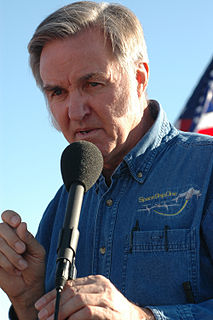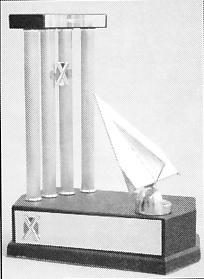
The Scaled Composites Model 311 Virgin Atlantic GlobalFlyer is an aircraft designed by Burt Rutan in which Steve Fossett flew a solo nonstop airplane flight around the world in a little less than 77 hours. The flight speed of 551 km/h set the world record for the fastest nonstop non-refueled circumnavigation, beating the mark set by the previous Rutan-designed Voyager aircraft at 9 days 3 minutes and a top speed of 196 km/h.
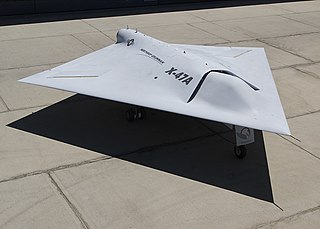
The Northrop Grumman X-47 is a demonstration unmanned combat aerial vehicle. The X-47 began as part of DARPA's J-UCAS program, and is now part of the United States Navy's UCAS-D program to create a carrier-based unmanned aircraft. Unlike the Boeing X-45, initial Pegasus development was company-funded. The original vehicle carries the designation X-47A Pegasus, while the follow-on naval version is designated X-47B.

The Rutan Quickie is a lightweight single-seat taildragger aircraft of composite construction, configured with tandem wings.
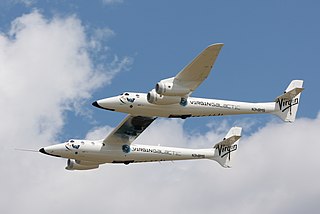
The Scaled Composites Model 348 White Knight Two (WK2) is a quadjet cargo aircraft that is used to lift the SpaceShipTwo spacecraft to release altitude. It was developed by Scaled Composites from 2007 to 2010 as the first stage of Tier 1b, a two-stage to suborbital-space manned launch system. WK2 is based on the successful mothership to SpaceShipOne, White Knight, which itself is based on Proteus.

The Scaled Composites ARES is a demonstrator aircraft built by Scaled Composites. ARES is an acronym for Agile Responsive Effective Support.
The Williams EJ22 was a small turbofan engine that was being developed by Williams International for very light jet (VLJ) aircraft applications.

The Williams FJ33 is a family of turbofan jet engines intended for use in very light jet aircraft. The FJ33 is a scaled-down version of the FJ44 engine. The FJ33-5A is the latest version certified in June 2016.

The Toyota TAA-1 was a prototype general aviation aircraft substantially built and test flown by Burt Rutan's Scaled Composites under contract with Toyota.

The Scaled Composites Triumph was a twin-engine, business jet prototype designed and built by Burt Rutan's Scaled Composites for Beechcraft. It was known officially as the Model 143, and internally at Scaled as the "Tuna". The aircraft is a three lifting surface design, with both a small canard, and a small conventional horizontal stabilizer in a T-tail configuration.

The Epic Victory was the second experimental jet designed by Epic Aircraft, a company that was based in Bend, Oregon. Epic Aircraft declared bankruptcy in 2009. Its assets were acquired by Aviation Industry Corporation of China and LT Builders Group; which as of July 2010 were in the process of restarting production of the Victory.
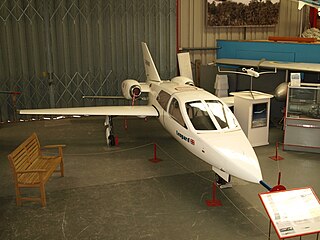
The CMC Leopard was a British light personal business jet developed in the 1980s. Two prototypes were built and flown, but the type was never put into production.

The Scaled Composites Model 81 Catbird is a high-efficiency five-seat single-engine all-composite general aviation aircraft designed by Burt Rutan. It is unusual in that it incorporates both a small forward wing and a small conventional horizontal stabilizer on the tail.

The Viper Aircraft ViperJet is a small homebuilt jet aircraft by Viper Aircraft Corporation. It is a conventional, low-wing monoplane with swept wings and tail and two seats in tandem under a bubble canopy. The jet intakes are located at the sides of the fuselage and the tricycle undercarriage is retractable. Construction throughout is of composite materials.
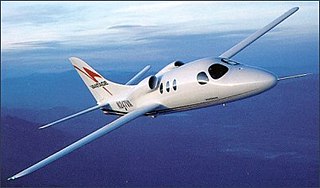
The VisionAire VA-10 Vantage is a prototype single-engined light business-jet designed and developed by the American company VisionAire Jets Corporation. Originally planned for production in the late 1990s, the original VisionAire Corporation failed in 2003. The project was acquired by Eviation Jets, which planned to produce it as the redesigned EV-20 Vantage Jet. Eviation also failed, and in 2012 the design was relaunched by a revived VisionAire under its original design.
The Scaled Composites Model 367 BiPod is an experimental flying car developed by Scaled Composites. It was the final aircraft designed by Burt Rutan prior to his retirement.
The Scaled Composites 401 is an American experimental aircraft, designed and produced by Scaled Composites of Mojave Spaceport, Mojave, California, introduced in 2017. The two examples built were constructed for an unnamed customer to demonstrate "advanced, low-cost manufacturing techniques" for the production of research aircraft for both industry and government.

